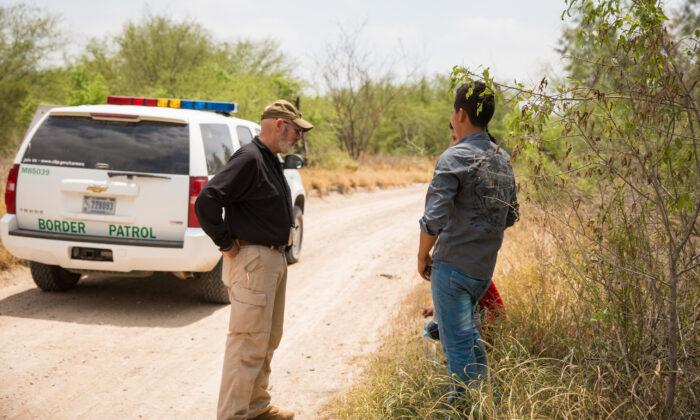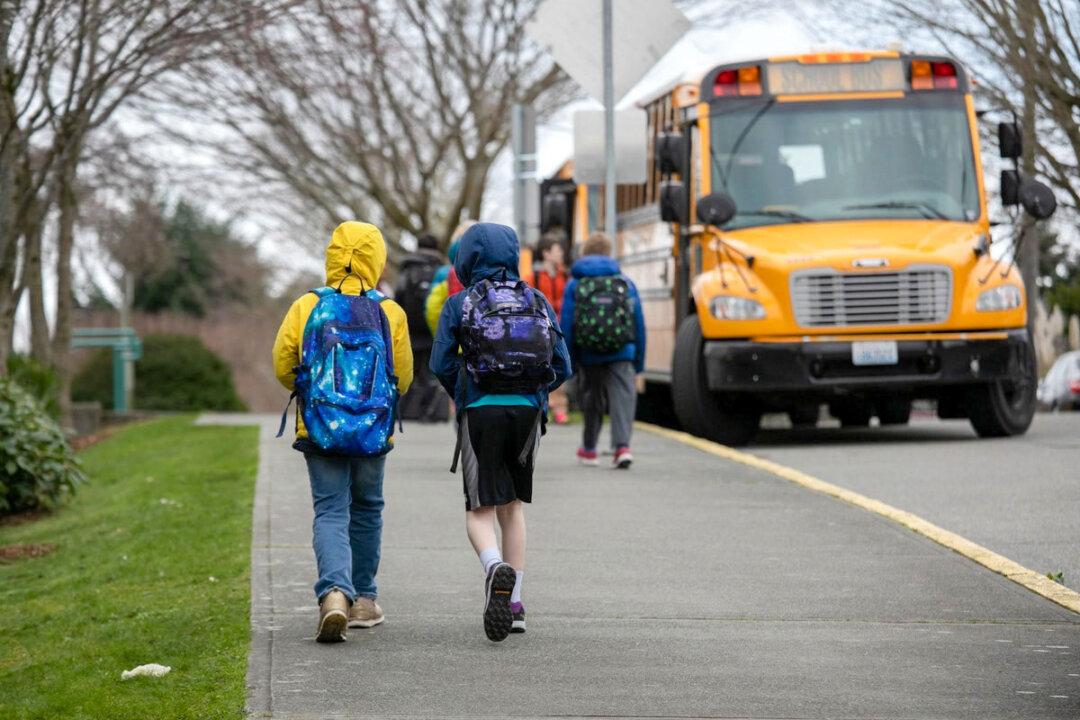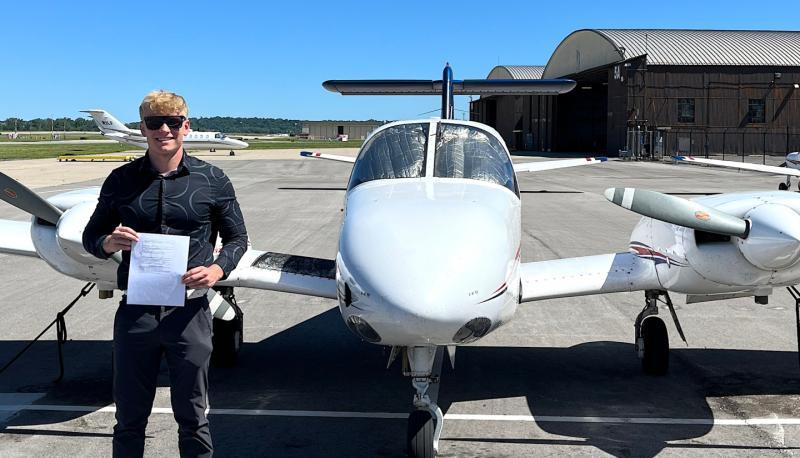On a September afternoon, Allyssia Solorio wondered why her energetic young brother hadn’t emerged from his bedroom in their Sacramento, Calif., home. When she opened his door, she saw 23-year-old Mikael leaning back on his bed with his legs dangling over the side. She rushed to her brother and shook him, but to no avail. He was dead. A counterfeit pharmaceutical pill laced with illicit fentanyl had killed him.
Mikael Tirado was one of an estimated 93,331 overdose fatalities in the United States last year–an all-time high. Nearly five times the murder rate, the deadly overdose toll was primarily caused by fentanyl, a highly lethal synthetic opioid. It’s manufactured mostly by Mexican cartels with ingredients imported from China, and then smuggled over the southwestern U.S. border. Fentanyl has been arriving in larger quantities each year since at least 2016.
The cartels are taking advantage of law enforcement weaknesses and policy failures to smuggle record amounts of the lethal drug into the United States, according to interviews with half a dozen current and former drug and immigration agents. While a lack of screening technology to find contraband at ports of entry and an inept U.S-Mexico campaign to cripple the cartels are longstanding issues, there’s also a new one: the flood of migrants across the border that the Biden administration has done little to stop.

Former law enforcement officials say the cartels are orchestrating the surge, overwhelming the capacity of agents to pursue drug smugglers. They can freely enter Texas, New Mexico, Arizona and California carrying fentanyl while agents are diverted to the time-consuming duty of apprehending and processing migrants.
Frustrated border agents and their union have been calling on Congress to send reinforcements. But help is not on the way. The administration’s upcoming budget request doesn’t include funding for more Customs and Border Protection agents.
In September, tensions boiled over after President Joe Biden and Vice President Kamala Harris lashed out at agents on horseback in response to videos showing them blocking Haitians crossing the border. Harris compared the incident to the mistreatment of slaves, an inflammatory accusation that the union strongly denied, saying no migrants were hit or hurt.
The administration is pivoting away from law enforcement and embracing a public health approach to the fentanyl crisis. It has proposed spending $11.2 billion—a huge increase over last year—to expand substance abuse prevention, treatment and recovery services. Fewer addicts would mean fewer deaths from fentanyl.
But curbing opioid addiction is very challenging. The vast majority of substance abusers avoid treatment, according to researchers, and only about one-third of those receiving long-term medical care fully recover. These success stories, however, will be offset if the supply of fentanyl continues to boom and fuel more addiction.
“Drug treatment is very important, but you can’t treat someone in the morgue who just died from fentanyl poisoning. It’s too late,” says Derek Maltz, the former director of the Drug Enforcement Administration’s special operations division, which primarily targets cartels. “We have to vigorously attack the production labs in Mexico and increase border security on our side.”
Cartels have turned to fentanyl because the super-potent powder is cheap to produce, making it more profitable than heroin, says Eric Triana, an assistant special agent in charge at the DEA division in New York. Two of Mexico’s most powerful crime groups—the Sinaloa and Jalisco New Generation cartels—manufacture the synthetic drug in rustic clandestine labs. In the U.S., the powder is mixed with heroin to stretch supplies.
To boost sales, cartels have more recently increased production of counterfeit pharmaceuticals. They are made with fentanyl but labeled to look exactly like legitimate medications such as Percocet, Vicodin and Xanax.
The fake pills, which are promoted and sold on social media platforms as real pharmaceuticals, are priced to sell at a discounted rate of about $20 each. They have brought the dangers of fentanyl to mainstream America, with victims belonging to every age, class and racial group. Nationwide, DEA agents seized an unprecedented 9.5 million fake pills—some portion of that total in every U.S. state in the first nine months of 2021, or more than the last two years combined. That prompted the agency to issue a rare public safety alert in September.
Fentanyl’s potency—at 50 times the strength of heroin—is what makes it so deadly. Two milligrams, which can fit on the tip of a pencil, can kill. But cartels don’t take precautions to make sure the pills aren’t lethal. DEA analysis found that 40 percent of the seized pills had a potentially deadly dose.
“I saw the devastation that heroin brought to Baltimore as a young police officer,” Triana says. “But fentanyl is a more potent deadly threat. It’s frightening.”
Diversion Game at the Border
They operate openly as if they were the Mexican military. Jalisco New Generation Cartel, which has recently expanded operations, even slaps a “CJNG” logo in big letters on its military-style trucks and uniforms as part of a show of force.The surge of migrants that began in 2019 and accelerated after Biden took office has been a boon to these violent enterprises. The migrants are coming from Eastern Europe and Africa as well as Central and South America, lured partly by the administration’s policy that allows unaccompanied children and families to stay in the states while they apply for asylum, according to border agents who have interviewed them. In addition to paying cartels between about $2,000 and $9,000 each to cross, migrants are also used as decoys in drug smuggling operations.
Equipped with encrypted communications and satellite technologies, crime organizations are precisely orchestrating the timing and location of the border crossings of large migrant groups as part of a diversion tactic, several officers say. Dozens of agents are forced to leave their posts guarding many miles of the border and at checkpoints on roads to assist with apprehensions of the groups.
A Call for More Agents
“The illegal alien flows are so big that the Border Patrol has to leave hundreds of miles of border unprotected,” says Avila. “This absolutely means more fentanyl has been entering the country in the last few years.”The smugglers make their way across tough terrain to one of hundreds of stash houses located near roads in the border region. The drugs are then placed in cars and driven through often unguarded checkpoints and across the country.
Rather than pursue these smugglers, many Border Patrol agents are handling the crush of migrants entering the U.S. They apprehended more than 1.7 million this fiscal year, or six times the 2017 number. (That doesn’t include the hundreds of thousands who got away, according to Border Patrol estimates.) Agents deport most of the single adults. But they have to assist in transporting, processing, housing and feeding the unaccompanied children and families who are placed in border patrol facilities for weeks before they are released into the U.S. to pursue asylum claims.
In the busiest border areas, such as Texas’ Rio Grande Valley and Del Rio, as many as 30% of agents are pulled from the frontlines to deal with the migrant overflow, says Brandon Judd, president of the National Border Patrol Council. Texas is trying to fill the security void by deploying hundreds of state troopers and the National Guard in Operation Lonestar, a $1.8 billion effort. They have seized 127 pounds of fentanyl this year through early September.
The Trump administration was able to tamp down the number of migrants crossing the border by forcing them to remain in Mexico while they applied for asylum. Biden ended that program, calling it inhumane, and the administration is now fighting a court order to reinstate it.
Judd says as long as Biden’s asylum policy is in place, the Border Patrol, which has about 14,000 field agents covering both coasts and both land borders, needs thousands more to help secure the Southwest flank. Pleas to congressional leaders for help, made by Judd’s union and former Border Patrol chiefs, have gone unheeded.
“If you are not going to change the policy, then give me more manpower to stop the drugs,” Judd says. “But Democrats control Congress, and while some of them are fairly good on border security, it isn’t a priority for a majority of them.”
So far this year, CBP has redeployed 400 agents from the northern and coastal areas to the southern border—not nearly enough to fill the gaps, Judd says.
In a statement to RealClearInvestigations, a CBP spokesperson said the agency continues to evaluate the need for more agents and pointed to drug busts as evidence of strong enforcement. Border and customs agents seized 10,000 pounds of fentanyl this fiscal year, according to agency data. That’s five times the catch in 2018. But agents say more seizures actually indicates that more of the deadly drug is entering the country since they have only been capturing an estimated 10% to 15% of the total.
Most of the fentanyl is pouring over the Southwest border at the U.S. ports of entry, particularly in California, a favorite route for smugglers. The challenge for customs agents at the controlled inspection ports in four states is very different than the cat-and-mouse pursuits of the Border Patrol: How to find illegal contraband in vehicles without slowing trade with Mexico worth hundreds of billions of dollars each year.
The San Ysidro port in California between San Diego and Tijuana is the busiest land border crossing in the Western Hemisphere. The 70,000 vehicle passengers headed north every day through the port have to wait in long lines of traffic for an hour, on average. Nearby, the thousands of commercial trucks that go through the Otay Mesa port daily have even longer waits.
Customs agents are in a fix. They are under pressure to efficiently clear trucks from Mexico carrying fruits, vegetables, electronics and other goods for entry into the U.S. But that priority to avoid costly commercial delays is in constant conflict with the need to stop and search the vehicles for illicit goods.
More often than not, smugglers get waved through without a search. “Transnational criminal organizations take advantage of the chaos and clutter at the ports of entry that are dealing with so much legitimate trade and travel,” says Victor Manjarrez, a former Border Patrol supervisor and now a security expert at the University of Texas at El Paso.
Cartels have the confidence to go big at the border. In August, a Mexican tractor-trailer driver attempted to cross at Otay Mesa with 2.8 tons of methamphetamine and fentanyl hidden among plastic household goods. Agents scanned the cargo using an X-ray-like machine and saw what they described as “anomalies” inside the trailer. Then a canine team sniffed out narcotics worth $13 million. It was the largest ever meth bust along the border.
Customs agents would arrest more smugglers if they were equipped with basic scanning technology used in the huge Otay Mesa seizure. It helps them quickly make better decisions about which vehicles to inspect manually, a process that can take hours. CBP says it has been deploying more large-scale scanners at ports of entry in the last two years.
Remarkably, only 15% of trucks were scanned at Southwest ports of entry in 2019, according to a CBP report. And less than half of them received any formal inspection because customs agents have to move too rapidly through the snarl of waiting traffic, says Manjarrez.
‘Hugs, Not Bullets’ in Mexico
More agents and technology would “absolutely make a bigger dent” in the flow of fentanyl over the border, Manjarrez says, but not stop it. Agents say Mexico also has to begin targeting the hundreds of cartel production labs to further cut the supply.“Destroying the labs has to be a top priority because, without them, the cartels can’t continue to kill our kids,” says Maltz, the former DEA organized crime specialist.
But President Andres Manuel Lopez Obrador ended Mexico’s military campaign against cartel leaders two years ago. Soldiers captured and killed many kingpins, but the crackdown also unleashed a reign of violence that Lopez Obrador pledged to blunt.
The populist president is pushing his “hugs, not bullets” agenda to reduce poverty in the hope that it will eventually curb the appeal of drug smuggling. Meanwhile, the cartels, facing little government resistance, have continued to expand their hold on territory and corrupt lawmakers, according to Vanda Felbab-Brown, a scholar focusing on nonstate armed actors at the Brookings Institution.
The clout of the cartels was made clear in 2020 when U.S. agents arrested a former Mexican defense secretary for taking bribes to protect the ultraviolent H-2 Cartel. Outraged officials pressured the U.S. to return Salvador Cienfuegos Zepeda to Mexico where prosecutors promptly exonerated him.
The more lasting damage to drug enforcement came when Mexico passed a law in response to Cienfuegos’ arrest. Maltz says it froze DEA’s operations in Mexico by requiring agents to pass sensitive intelligence through a central foreign affairs office that they believe is corrupt.
The US Plays Nice
With the U.S. drug enforcement imperiled, Felbab-Brown has called on the Biden administration to “get tough” with Mexico. In January she urged the administration to use financial support as leverage to compel Mexico to target mid-level cartel operatives and their corrupt government protectors to avoid the bloodshed that comes with taking down bosses.But the State Department is taking a conciliatory position, essentially backing Lopez Obrador’s economic development strategy in an agreement between the two countries announced in early October.
At a joint press conference, U.S. Secretary of State Antony Blinken said the countries had relied too much on security forces to try to weaken the cartels. Over the past decade the U.S. has spent $3 billion to arm and train the Mexican military and police as part of the Merida Initiative. During that time, drug trafficking into the U.S. increased. A new agreement will replace Merida, making job creation in poor communities and drug treatment and prevention top priorities, Blinken said.
The countries did agree to pursue the cartels, particularly by curtailing the illegal supply of U.S. arms into Mexico and money laundering activities. But the prosecution of cartel members isn’t the priority. Mexico Foreign Secretary Marcelo Ebrard said the success of the agreement won’t be measured by how many drug lords go to jail.
The administration’s strategy has plenty of backers in the criminal justice and public health professions. “I’m sympathetic to the argument that Mexico is on the border with the largest consumer of fentanyl and cocaine in the world,” says Bryce Pardo, a drug policy specialist at Rand Corp. “We could do more to reduce our insatiable appetite for drugs.”
In the meantime, more fentanyl smuggled into the U.S. means more deaths. Triana, the DEA special agent, estimates that the number of overdose fatalities this year will either be on par with or exceed 2020’s.
Allyssia Solorio, the sister of the Sacramento man who died from fentanyl, has become an activist to raise awareness of the dangers of the illicit drug. The former postal worker says law enforcement must play a larger role.
“President Biden can do a lot more to shut down the smuggling of fentanyl over the Mexican border,” she says.






